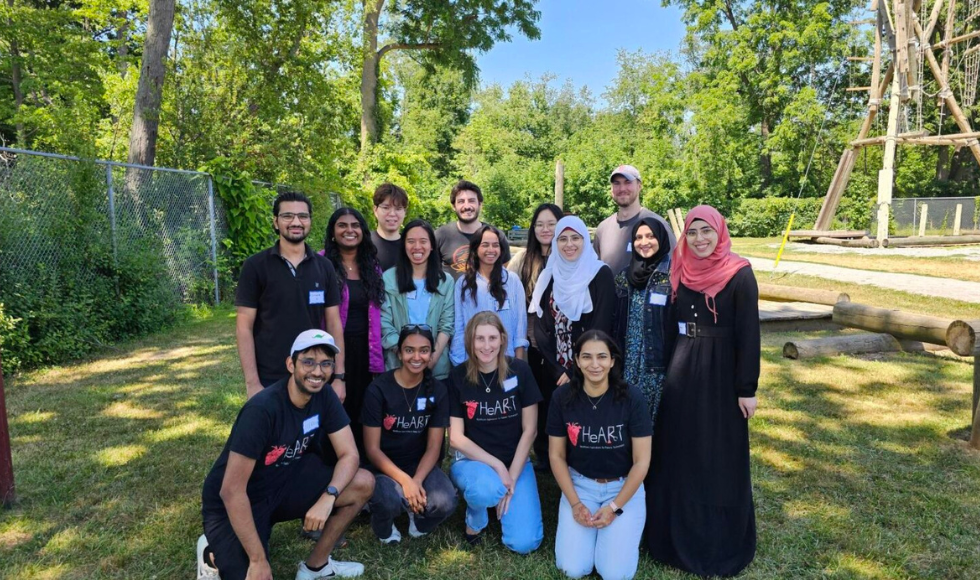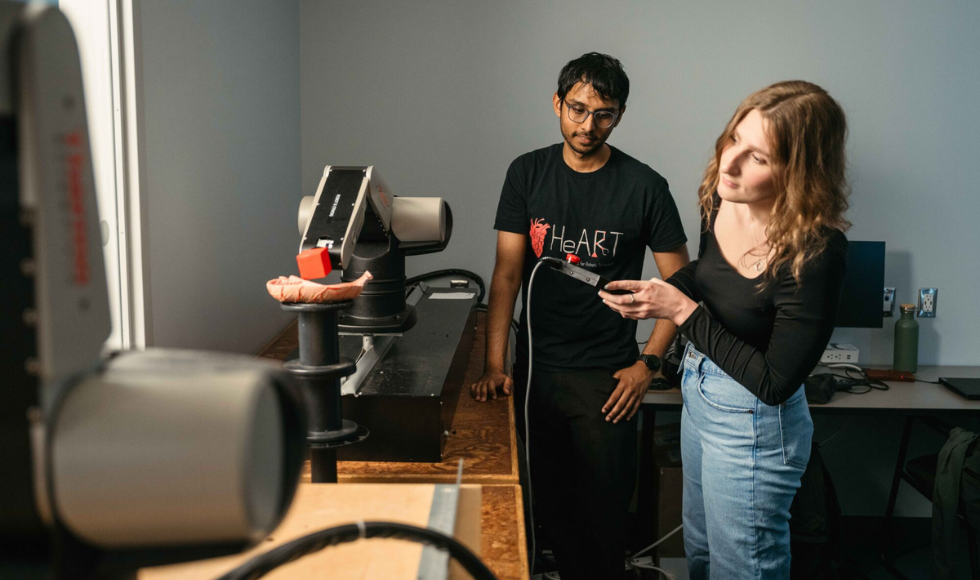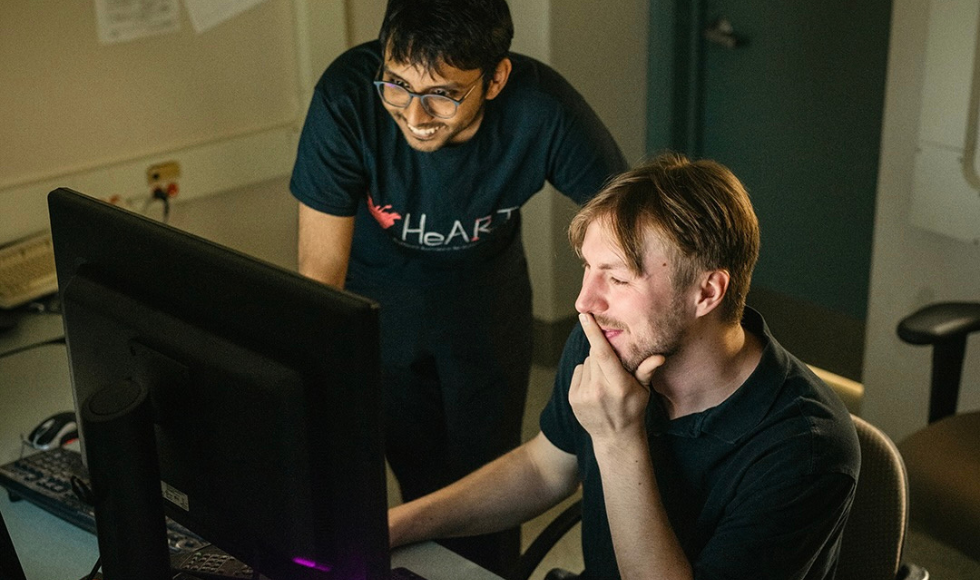A lab with HeART: designing millimetre-scale hardware for healthcare

Onaizah’s lab – Healthcare Applications for Robotic Technologies, or HeART for short – is as dynamic as the robots it produces.
August 6, 2025
When assistant professor Onaizah Onaizah tells her students, “If you don’t capture it on video, it didn’t happen,” she’s only half joking. In her lab at McMaster University, where millimetre-scale robots are designed to navigate the human body, proof of concept is everything.
A roboticist and assistant professor in the Department of Computing and Software, Onaizah is leading groundbreaking research in microrobotics; tiny, magnetically controlled devices that could one day revolutionize how we diagnose and treat disease.
Her work is part of a growing field that blends engineering, medicine and imagination. “We’re building robots from the ground up,” she says. “At this scale, the hardware challenges haven’t been solved yet. That’s what makes it exciting.”

From lab bench to operating room
Unlike traditional robots, which are often pre-assembled and programmed, Onaizah’s creations are built from scratch – and sometimes smaller than a grain of rice. These robots can’t carry their own power or sensors, so her team uses external magnetic fields to control their movement and function.
The potential applications are vast. In one project, her lab is developing a magnetically actuated capsule endoscope; a swallowable device that can be guided through the gastrointestinal tract to take images, deliver drugs or even collect microbiome samples. Unlike earlier versions of capsule endoscopy, which passively drifted through the body, the new design allows for real-time control and targeted diagnostics.
Another project focuses on continuum robots, which are flexible, snake-like devices inspired by elephant trunks and octopus tentacles. These robots are being developed in collaboration with ear, nose and throat surgeons to navigate the complex geometry of the sinuses, potentially offering less invasive options for surgery and post-operative care.
A third initiative centres on a custom-built 3D printer that can fabricate soft, magnetic robots in minutes – a process that once took days under a microscope. “We’re mixing UV resin with magnetic particles, which results in printing functional devices,” Onaizah explains.

A lab with HeART
Onaizah’s lab – Healthcare Applications for Robotic Technologies, or HeART for short – is as dynamic as the robots it produces. With a mix of undergraduate and graduate students, many of them women, her team thrives on hands-on experimentation and mentorship. “I pair undergrads with grad students so they can work on real projects,” she says. “It’s about building something meaningful, not just running simulations.”
A past feature of Onaizah’s research on magnetic microrobots in a popular Veritasium YouTube video, approaching two million views, has sparked a wave of interest from undergraduate students, many of whom have shown up at her lab eager to explore research opportunities. Pairing undergraduate and graduate students has resulted in an environment of collaboration and mentorship.
HeART’s growing presence on campus is thanks in part to the novelty of the work she’s doing at McMaster, combined with interest from local surgeons in nearby Hamilton hospitals and granting agencies that invest in the potential of the team’s work.
A long game with potential for far-reaching impact
While clinical use of these technologies may still be 15 to 20 years away, Onaizah is undeterred. “I love the basic science and development stage,” she says. “If a company came to me and wanted to commercialize it, I’d be happy to work with them.”
Onaizah’s work is already gaining recognition. Her team has filed provisional patents on both the capsule and the 3D printer, and their research has earned awards and nominations at major robotics conferences. Still, she notes, McMaster is underrepresented in the global microrobotics community – a gap she hopes to help close.
As patents on legacy surgical robotics systems begin to expire, Onaizah sees a wave of innovation on the horizon. “This field is just getting started,” she says. “And we’re right at the edge of what’s possible.”




